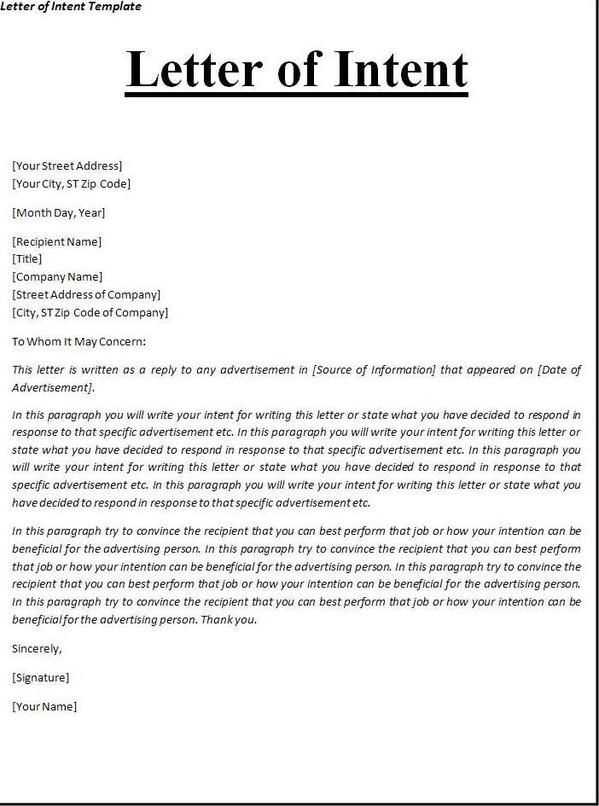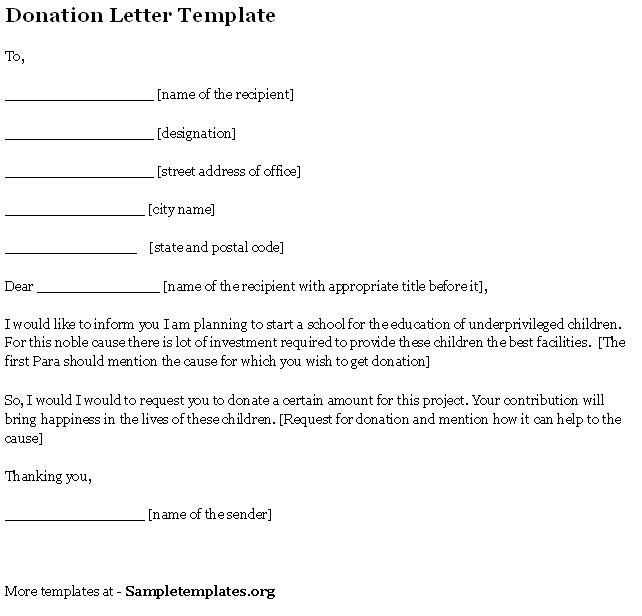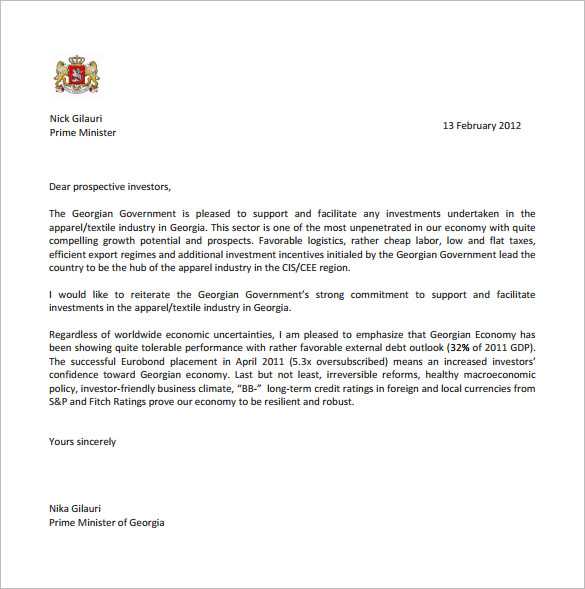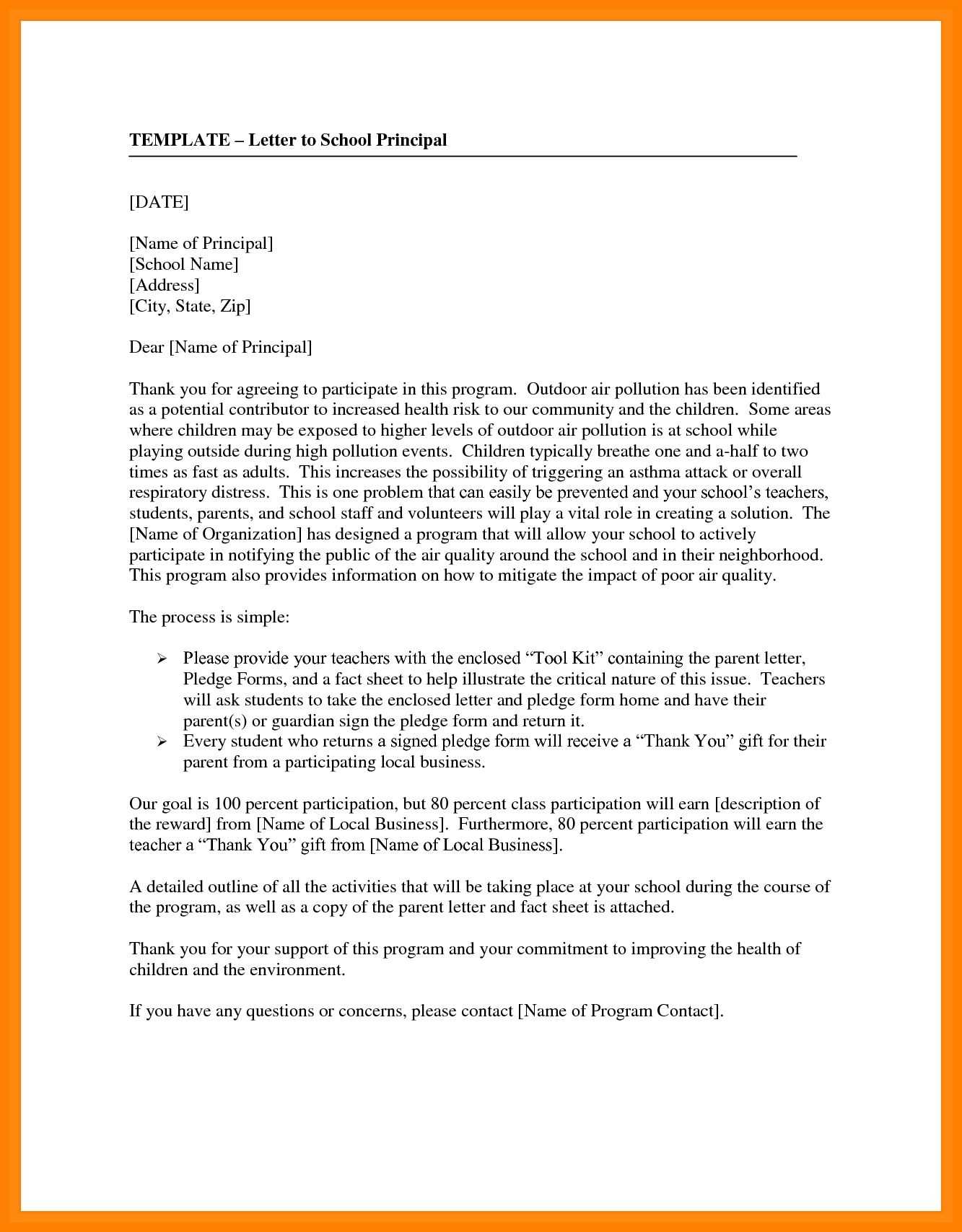Letter to potential investors template

Writing a letter to potential investors is a direct way to communicate your business vision and goals. Make sure your message is clear and focused, detailing how your company stands out and the value it can offer. Begin with a compelling introduction that grabs attention–mention the specific opportunity you’re presenting and why it’s relevant to them now.
In the body of the letter, clearly outline the key points of your business proposal. Use concise language to describe the market potential, your business model, and why it’s a sound investment. Keep it to the point–investors are looking for concrete facts and figures, so highlight growth projections, unique selling points, and any past successes. Be sure to explain how their involvement would directly contribute to the success of the business.
End the letter with a strong closing statement, inviting further discussion. Keep the tone confident yet respectful, offering to schedule a meeting or provide more details if necessary. Use a polite but assertive call to action that makes it easy for the investor to take the next step.
Letter to Potential Investors Template
Begin with a direct greeting and acknowledge the recipient’s potential interest in your project. Mention how their investment can make a meaningful impact on your business. Keep your tone respectful yet confident, showing that you understand their value.
Introduction

State the purpose of your letter clearly. Let the investor know why you’re reaching out and why their investment could lead to mutual success. Avoid vague statements and get straight to how your vision aligns with their interests.
Business Overview

Offer a concise description of your business. Highlight key metrics, such as growth projections, market opportunity, or innovations that set you apart from competitors. Investors need facts and clear evidence that the business has potential.
Investment Opportunity

Provide specific details about the investment opportunity. Explain the funding amount you’re seeking, how it will be used, and what returns the investor can expect. Make sure to present data that demonstrates the opportunity’s profitability.
Closing Remarks
Reaffirm your commitment to building a profitable and scalable business. End with a call to action, inviting the investor to schedule a meeting or discuss further. Be polite and express excitement about the possibility of collaboration.
| Key Aspect | Details |
|---|---|
| Investment Amount | $500,000 |
| Expected ROI | 20% annually |
| Business Milestones | Product launch, market entry, revenue generation |
| Use of Funds | Marketing, product development, team expansion |
Crafting a Compelling Opening Paragraph
Open with a direct statement that sparks curiosity or presents a clear value proposition. Introduce your company or idea succinctly and immediately convey what sets you apart. Instead of generalities, focus on a specific problem your business solves or a unique opportunity you offer. Use precise data or examples to make the introduction feel grounded and relevant.
Ensure your tone is confident but approachable, providing just enough intrigue to encourage the reader to continue. Avoid overwhelming them with too much detail upfront–keep it sharp and to the point. Clearly identify why an investor should care within the first few lines, demonstrating how their involvement could lead to tangible results.
Identifying Key Investment Opportunities
Focus on sectors with strong growth potential, such as renewable energy, technology innovation, and healthcare. Look for companies with a clear path to profitability and a proven ability to scale. Prioritize businesses that have established a strong brand presence and have diversified their revenue streams.
Evaluate financial stability by reviewing balance sheets, cash flow, and profit margins. A solid financial foundation indicates the company can weather economic downturns and reinvest in growth. Seek investments in companies with low debt levels, as this lowers risk exposure.
Examine management teams with a track record of delivering results. Leadership plays a critical role in turning potential into success, especially in competitive markets. Look for entrepreneurs with experience and a clear vision for their business.
Invest in emerging markets where demand for goods and services is expected to rise. These regions often offer attractive returns as infrastructure develops and consumer spending increases. Analyze market trends and consumer behavior to identify where demand is accelerating.
Monitor industries with high barriers to entry, which can protect established companies from new competition. Proprietary technology, intellectual property, or regulatory hurdles can offer long-term advantages.
Stay ahead by tracking innovations that address global challenges, such as climate change and healthcare advancements. These areas often attract government support, making them promising for investment.
Establishing Credibility and Trustworthiness
Provide concrete evidence of your company’s track record. Highlight key achievements, milestones, and metrics that showcase growth and stability. Investors value transparency, so be open about both successes and challenges.
- Showcase financial stability with clear, concise financial reports.
- Present testimonials or case studies from satisfied clients or partners.
- Feature any industry certifications, awards, or recognition your company has earned.
Include the expertise of your leadership team. Outline their qualifications, experience, and past accomplishments. This builds confidence in their ability to navigate challenges and drive success.
- List leadership roles and accomplishments from previous ventures.
- Share relevant education or specialized training.
Be consistent in your messaging across all communication channels. Trust is built when investors see a clear, unified narrative about your company’s mission, goals, and strategies.
Outlining Financial Projections and ROI
Provide a clear breakdown of your financial projections for the next 3-5 years. Outline expected revenue growth, key expenses, and profit margins. Include realistic assumptions about market size, pricing strategies, and customer acquisition. Be transparent about risks that may impact financial performance, such as market competition or regulatory changes.
Revenue and Profit Forecasts
Base your revenue projections on solid data, such as past performance or industry benchmarks. Detail expected customer acquisition rates, average deal sizes, and pricing models. Include a breakdown of key cost areas, such as production, marketing, and labor. Align projections with market trends and potential expansion opportunities, showing realistic timelines for achieving profitability.
Return on Investment (ROI) Analysis
Demonstrate the potential ROI for investors by highlighting the relationship between initial investment and expected returns. Present a clear timeline for when investors can expect to see returns and quantify the potential upside. Use metrics such as payback period and internal rate of return (IRR) to make your case compelling and grounded in solid financial reasoning.
Addressing Potential Investor Concerns
Provide clear, transparent data on the current market position, growth potential, and projected financial returns. Investors seek evidence of stability and scalability. Include detailed financial statements, forecasts, and data-backed insights to reassure them of the potential for growth.
Outline your risk mitigation strategies. Address possible obstacles and how you plan to handle them. Whether it’s competition, regulatory changes, or economic downturns, show a realistic and proactive approach to overcoming challenges.
Present your team’s qualifications and experience. Investors want to know they are backing a competent group. Highlight the track record of key team members, their roles, and how they contribute to the success of the project.
Show your commitment to long-term profitability. Emphasize strategies that prioritize sustainable growth, including customer retention, innovation, and market expansion. Explain how these efforts will result in consistent returns for investors over time.
Offer insight into how investors will receive updates on progress and outcomes. Regular communication on performance metrics, milestones, and financials helps build trust. Establish a system for providing detailed reports and addressing investor concerns promptly.
Concluding with a Clear Call to Action
Finish your letter with a direct and actionable request that motivates your potential investors to act swiftly. Be specific about the next steps they need to take to proceed with the investment process.
Consider these recommendations when crafting your call to action:
- Clearly state how the investor can express interest–whether through a meeting, a phone call, or a signed agreement.
- Include a deadline or timeline that encourages prompt action without pressure.
- Provide contact details for immediate follow-up, ensuring they know how to reach you quickly for any clarifications or further discussions.
By leaving no ambiguity about the next step, you position yourself as organized and ready to move forward, which builds confidence and trust in your proposal.